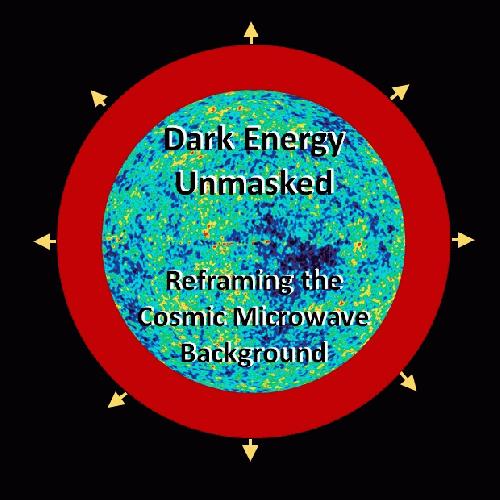In its simplest terms, that hypothesis states the Big Bang resulted in an enormous amount of radiant energy that, according to Einstein's Equation, would have been elastically linked to all other matter, energy, momentum, pressure and tension in the entire Universe. It is widely believed that the Universe, in its earliest moments, was dominated by radiant energy but the implications have been overlooked. This elastic linkage between the matter in the observable universe and the outward-bound radiant energy creates the dual phenomenon that simultaneously extracts energy from the outgoing radiant energy and exerts a gravitational attraction on the matter which then accelerates outward. This extraction of energy from the outgoing radiant energy results in the red-shifting of the radiant energy's wavelength - which means lower energy. Recognizing the comprehensive and interrelated effect of both the outward-bound energy and acceleration of the inertial mass of the observable energy was referred to as the Gravitational Red Shifted Gravity Moat (GRSGM) hypothesis in the previous article.
It was posited that the only counterargument to the GRSGM hypothesis that seemed applicable was that "there cannot be that much gravitational effect from energy radiated during, and in the aftermath of, the Big Bang". While the relative amounts of energy in the sphere of the radiated energy inducing the GRSGM vis-Ã -vis the amount of energy, mass, momentum, pressure and tension in the observable Universe is unknown, the expectation that radiated energy dominated the Big Bang and the moments afterwards is central to nucleosynthesis - which describes the formation of hydrogen, helium and trace amounts of lithium in the aftermath of the Big Bang.
Given the meager ability of current particle accelerators to create matter from energy, it is not unreasonable to hypothesize that, even in the cauldron of energy brought-forth in the Big Bang, that a relatively small proportion of the total energy was expended in the creation of known particles and that a larger fraction of the energy would have been dispersed as radiated energy - with its subsequent, and not insignificant, linked gravitational effect on the matter in the observable Universe.
Importantly, the GRSGM hypothesis explicitly incorporates momentum from an initial radial velocity as a key component influencing the dynamics of the expanding Universe. Under this framework, the inter-related dynamics of an initial velocity, the gravitational pull induced by the GRSGM hypothesis and the gravitational attraction of matter could provide the basis for an explanation for a changing rate of acceleration in the observable Universe as the gravitational attraction of matter-to-matter decreases with increasing separation.
Since its discovery in the last century, the CMB phenomenon has been explained as the fossil remnant of the energy from a very specific period of time shortly after the Big Bang. The microwave radiation of the CMB is explained as the result of wavelengths of radiant energy being emitted from a compact Universe radiating as a black body at 3,000 degrees Kelvin then those wavelengths being stretched as space, itself, expanded by a factor of 1,100. This requires space to expand which appears to violate conservation of energy in the broadest sense and an alternative explanation that does not violate the conservation of energy principle would be preferable.
Explanation of Red-Shift
Because the concept of observed red-shift of radiant energy from objects is central to a discussion of the CMB, the following explanation provides a basis for understanding the phenomenon.
Based on an analysis of a spectrum of light from a distant object, the wavelength vs. amplitude of radiant energy can be determined. In that spectrum, emission or absorption lines of specific elements can be observed. By comparing the emission or absorption lines from a stationary laboratory test to the observed spectrum, a red shift can be calculated using the following formula:
Redshift z = (Î �observed - Î �rest) / Î �rest
For example, if the red-shift doubled the wavelength from "x" to "2x" due to either the expansion of space, itself, or due to a kinematic doppler effect (e.g., classical concept of relative motion), the redshift would be calculated as follows:
Redshift z= (2x - x) / x
Redshift z = 1*x/x
Redshift z = 1.0
The most distant galaxies that have been observed have a red-shift of approximately 10, which means the characteristic emissions lines have been stretched to wavelengths that are 10 times longer than they would be in a laboratory experiment. As will be discussed, the redshift for the CMB is about two orders of magnitude larger than the redshift of the most distant galaxies and has been calculated to be approximately z = 1,100.
While these are all considered to be redshifts, the CMB redshift does not contain any identifiable emission or absorption lines to use in the previous formula. Rather the z = 1,100 redshift is the ratio of the dominant emission peak of a black-body at 3,000 degrees Kelvin vs. the dominant emission peak of the CMB at radiating as a black body at 2.7 degrees Kelvin.
(Note: You can view every article as one long page if you sign up as an Advocate Member, or higher).





